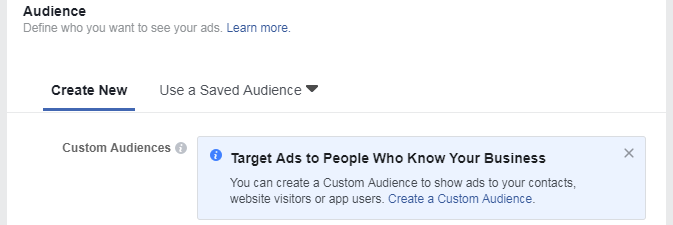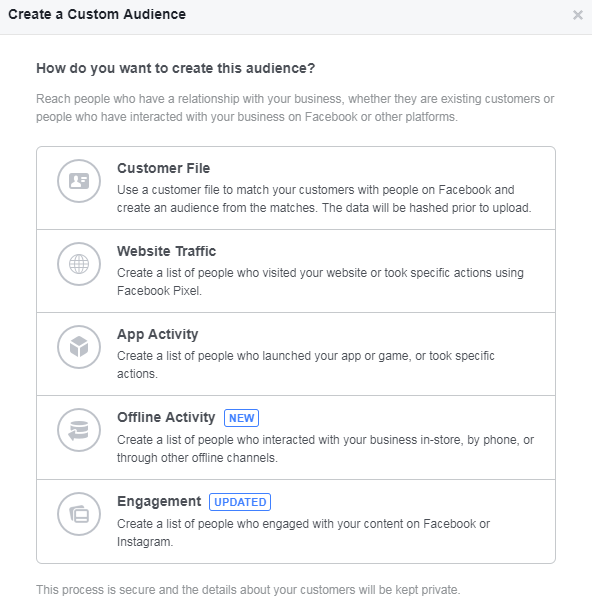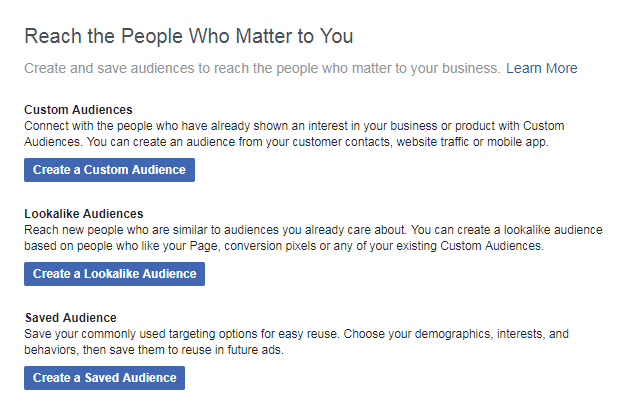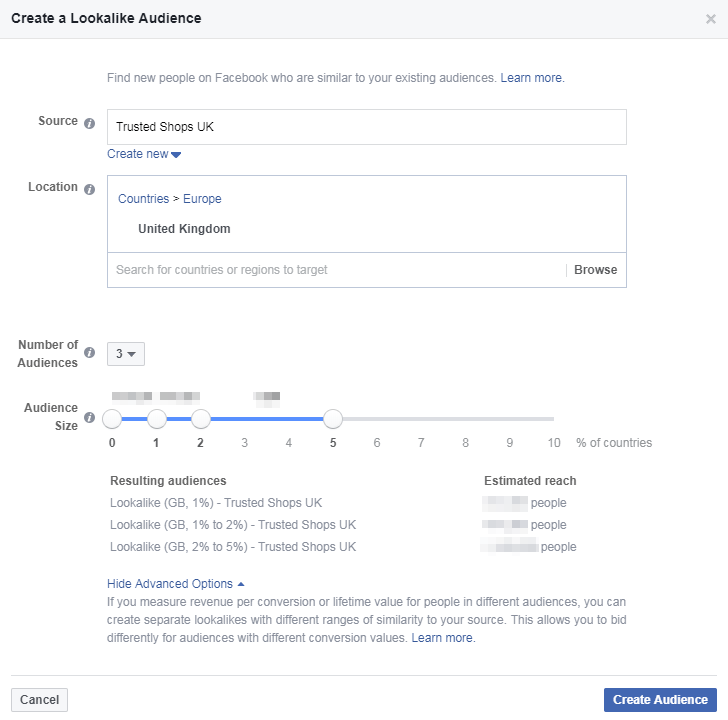Father's Day Marketing: 5 Tips for Promoting Your Online Shop
With Father’s Day approaching, it’s time to think about promotions and sales. What can small businesses do to boost their sales for the upcoming holiday?

Facebook advertising is one of the most powerful marketing tools available today. There are so many options and tools available today that it might seem overwhelming to those new to the trade. One of the most useful options in Facebook ads is something called “Similar Audiences”. In today’s blog, we’ll let you know about how to set them up and get the most out of your ad spend.
A Lookalike audience is more or less what it sounds like. Because we are talking about ads, the “Audience” is a group of shoppers that you’ll aim your ads at. The “Lookalike” part is what is quite interesting.
Facebook is “data rich”. We all know that. As a marketer, this is incredibly useful because you can tell Facebook who your best customers are (many of them are probably Facebook members). Facebook can then use all the data they have on these individuals and create a list of different members who behave similarly to the ones you’ve provided; hence the name “Lookalike Audience”.
This “similar behaviour” may include factors such as age, gender and geography. However, Facebook has much more interesting data to determine which users are similar to your given audience. Other factors like “Pages followed,” “websites visited,” and “posts liked” are also factored into Facebook’s algorithm when determining who would be an appropriate member to push your ads to.
With the wealth of data at your fingertips, it's evident that "Lookalike Audiences" are a valuable tool for marketers to target the users most likely to purchase their products. Ready to dive into creating a Lookalike Audience? Keep reading!
The first step to creating a Lookalike Audience is having a source for Facebook to compare users to. This is known as a seed audience. Because you’ll provide Facebook with a list of previous buyers, it makes this particular ad strategy much more useful for businesses that have already made some sales. However, if you have collected a fair amount of Facebook/Instagram followers, it’s also possible to create a seed audience.
In the Facebook Ads Manager, you’ll find the Audience section. From there, you’ll see a link “Create a Custom Audience”.

Once you’ve clicked on “Create a Custom Audience”, you’ll be provided with a choice of sources for uploading this audience information to Facebook.
You can either upload a list of contact details (manually), use the Facebook pixel information you’ve collected (website traffic), refer to a list of app-downloaders (probably not so useful for most e-commerce shops), connect users who have shown interest in your events (which have been shared on Facebook), or create a list of people based on who has engaged with your content on either Facebook or Instagram.

With the Customer File, you can upload your own lists to Facebook using a CSV file or a text file. You’ll also have the option to copy and paste the information in. You can also import your contacts with MailChimp, an email marketing platform. Facebook now lets you add Customer LTV (Lifetime Value) to your lists to help Facebook figure out who your most valuable customers are.
Website traffic refers to the visitors of your website that Facebook tracks with the Pixel. After installing the Pixel, you can use this information to retarget (aka remarket) to them based on specific actions they’ve taken on your site. For example, you can target website visitors who have visited a specific page on your site or who have spent a certain amount of time on your site.
I’m going to skip App activity because this isn’t relevant to most online shops, but you can read more about it on Facebook’s website.
I’m also going to skip the Offline Activity section as it’s also irrelevant to most small online businesses. However, read more about it here.
The last section, Engagement, can be very useful for shops who have a strong social media presence, even if they haven’t sold anything online yet.
What’s important to remember when setting up a seed audience is that you’ll need at least 100 Facebook members in the same country to qualify this list as basis for creating a Similar Audience list. Again, this can be tricky for completely new shop owners, but if you’ve uploaded the pixel and had a decent amount of traffic or created a strong social media following, it can still work.

Shutterstock/ESB Professional
Now that you have a seed audience, you’ll want to create a Similar Audience list.
From the hamburger menu in Ads Manager, head to “Audiences”. Here, you’ll be asked to choose an audience that you want to create. Select “Create a Lookalike Audience”.

From the next menu, you can choose the Audience list you’ve created, choose a location, and also an audience size relative to the country’s general population (1-10%).
Generally speaking, the lower the percent (1%), the more similar the lookalike audience is to the seed audience. It basically comes down to similarity vs reach (1% vs 10%). With the advanced settings, you can also segment these percentages into different ad groups and adjust your bids according to how much you want to reach those target groups (1% gets higher bids).

And there you have it: you’ve created a lookalike audience. Just as with any advertising campaign, you’ll need to give it some time before you can really determine the campaign’s effectiveness. By the time your ad gets to around 1,000 impressions, the Facebook algorithm has more or less figured out what works and what doesn't. Once your ad has hit this "thousand-impression mark", it's fair to start analysing the campaign and considering ways to optimise it.
It was mentioned before that you need at least 100 Facebook contacts in your seed list in order to create a lookalike audience. However, the more contacts you have, the better Facebook can find similar matches. It’s simple math: a greater pool of contacts lets Facebook find a more accurate and relevant audience. Facebook identifies 10,000-50,000 contacts as the optimal audience size. However, other experts claim they’ve had a lot of success with a more reasonable size of 2,000-5,000 users.
Segmenting your groups is also advisable. However, be careful because there’s a good chance some users might be found in 2 or more segmented audience lists. Similarly to what was mentioned above, you can segment the 1-2% from the 2-4% and place different bids on these two groups as opposed to one bid for a unified 1-4% range. You can also segment your audiences by LTV or different target groups (Men vs women, ages 20-35 vs 35-45, etc.)
When segmenting groups, keep in mind that some users will appear in multiple audience lists. Facebook offers an Audience Overlap Tool for this. If you’re running multiple ad campaigns it might be fine to have some users overlap into multiple audience lists. However, if you’re running one ad at a time, you run the risk of overexposing your ad to those users and turning them off to your brand.
Facebook offers so many great tools for promoting your brand on their network. With the “Lookalike Audience” feature, you can reach out to new customers whose online behaviour matches to those of your best and most consistent customers.
To read more about Facebook advertising, click on the button below for a whitepaper produced by our Trusted Shops experts:
27/02/18With Father’s Day approaching, it’s time to think about promotions and sales. What can small businesses do to boost their sales for the upcoming holiday?